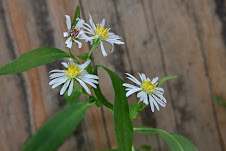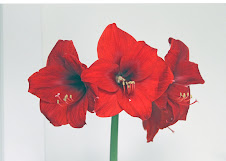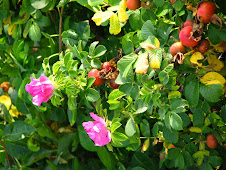The first day of spring arrived yesterday, Saturday, March 20th. The day was sunny with temperatures in mid 70s. The daffodils, crocuses, and forsythia blooms are prettier than ever thanks to the snow’s moisture and minerals.
The average date for the last frost for Richmond is April 27th. About 4 weeks before the last frost, which would be around March 27th, is the time to plant dormant roses and bare-root shrubs. Dogwoods and magnolias should only be planted in the spring.
Perennials such as hostas, liriope, Shasta daisies, and daylilies can be divided before new growth starts. Separate the plants and place back into the soil at the original depth. Water well and mulch. Plant the extras in containers for gifts.
Even with the cool days you can plant petunias, snapdragons, marigolds, nasturtiums, and dianthus.
Fertilize lilies, clematis, lilacs and bearded iris with bone meal or 5-10-5 plus lime. Also fertilize pansies and houseplants. Do not begin fertilizing peonies until after they have been planted for 2 to 3 years. A great all around fertilizer is liquid seaweed.
Vegetables that can be planted before the last frost are lettuce, kale, spinach, cabbage, broccoli and Brussels sprouts. Plant onions, potatoes, peas, radishes, asparagus, and turnips near the end of the month. Seedlings started inside will appreciate fertilizing at half strength every two weeks.
Add mulch to asparagus, artichokes, bramble fruits and fruit trees. March is too early to remove mulch from your other plants. The ides of March can bring surprises such as last year when we had an 80 degrees week followed by two frosts.
March is a good time to repot houseplants into larger containers. Leggy plants should be cut back. Root your cuttings for our plant exchange in May. The secret to rooting coleus and wax begonias is to cut the top 6 inches of a leafy stem below a leaf node. Then remove the leaves from the bottom 3 inches and place the cutting in water adding a few drops of bleach. Place in a partially sunny window. Place in soil after roots have developed.
One way to celebrate spring is to attend the free Arbor Day Workshops and Exhibits on April 3rd at Byrd Park. Stay Co2ol with Trees, is on a Saturday from 10 a.m. to 2 p.m. at the Carillon in Richmond’s Byrd Park. During the festivities, Richmond,VA will receive Tree City USA recognition from the Arbor Day Foundation for the 19th straight year.
There will be a free tree giveaways, workshops, kid activities and music. Attendees will be able to purchase compost bins at a discount through the Clean City Commission.
Sunday, March 21, 2010
Monday, March 1, 2010
Orchids, Virginia Historic Garden tour & Amaryllis
Did you miss last weekend’s Orchid Show at Strange’s (www.strangesgardencenter.com) in Richmond, VA? The show was presented by The Virginia Orchid Society (vaorchidsociety.org) with orchid displays and vendors. Free lectures both days and free repotting.
Orchids provide lovely indoor bloom during the barren winter months. To find an orchid show in your area visit the American Orchid Society (http://www.aos.org/).
By April the snow will have disappeared for the 77th anniversary of Historic Garden Week in Virginia (www.vagardenweek.org & www.GCVirginia.org.) which is April 17th thro 25th. This is when Richmond and the surrounding counties are ablaze with blooming azaleas, lilacs, cherry trees, daffodils and tulips.
Free guidebooks are available at certain garden centers. Tickets may be purchased in advanced or at the houses or gardens during the day of the tour. Expect to wait in long lines to enter the historic private mansions and gardens.
Call the Virginia Tourism Corporation at 1 800-545-5500 for travel accommodations info, a free travel guide, and a state highway map.
Hope this is the end of our snow. Last year at this time the crocuses and daffodils were blooming. Now my daffodils are staying close to the ground and the buds are green.
I decided to google for info on the continuing care of my Amaryllis (Hippeastrum). I was amazed to find more than 250 sites. One site amaryllis.com only sells Amaryllis bulbs. For “after blooming care” cut off only the dead flowers. The flowering stem should not be cut until it starts sagging. After our last frost the pot can be placed outside in full sun. To provide food for the bulb you should continue to water and fertilize all summer.
Orchids provide lovely indoor bloom during the barren winter months. To find an orchid show in your area visit the American Orchid Society (http://www.aos.org/).
By April the snow will have disappeared for the 77th anniversary of Historic Garden Week in Virginia (www.vagardenweek.org & www.GCVirginia.org.) which is April 17th thro 25th. This is when Richmond and the surrounding counties are ablaze with blooming azaleas, lilacs, cherry trees, daffodils and tulips.
Free guidebooks are available at certain garden centers. Tickets may be purchased in advanced or at the houses or gardens during the day of the tour. Expect to wait in long lines to enter the historic private mansions and gardens.
Call the Virginia Tourism Corporation at 1 800-545-5500 for travel accommodations info, a free travel guide, and a state highway map.
Hope this is the end of our snow. Last year at this time the crocuses and daffodils were blooming. Now my daffodils are staying close to the ground and the buds are green.
I decided to google for info on the continuing care of my Amaryllis (Hippeastrum). I was amazed to find more than 250 sites. One site amaryllis.com only sells Amaryllis bulbs. For “after blooming care” cut off only the dead flowers. The flowering stem should not be cut until it starts sagging. After our last frost the pot can be placed outside in full sun. To provide food for the bulb you should continue to water and fertilize all summer.
Subscribe to:
Comments (Atom)



















LP_gardening_2666.jpg)
LP_gardening_2668.jpg)

LP_garden_2819.jpg)

LP_flower_0563.jpg)
LP_flower_0577.jpg)
LP_flower_0545.jpg)
LP_flower_0555.jpg)
LP_flower_0539.jpg)
LP_dog_0470.jpg)
LP_snow_0467.jpg)
LP_dog_0349.jpg)
LP_tree_8153.jpg)
LP_5028.jpg)
LP_flowers_3940.jpg)

LP-grass_0889.jpg)
LP_redfox_1651.jpg)
LP_squirrel_6978.jpg)
LP_flower_6936.jpg)
LP_squirrel_6864.jpg)
LP-deer_4773.jpg)
LP_4521.jpg)
LP_1251.jpg)
LP_4585.jpg)
LP_3784.jpg)
LP_3759.jpg)
LP_3811.jpg)
LP_3816.jpg)
LP_3847.jpg)
LP_0870.jpg)
LP_4183.jpg)
LP_0891.jpg)
LP_3175.jpg)
LP_3577.jpg)

LP_3068.jpg)
LP_3058.jpg)
LP_3562.jpg)
LP_0118.jpg)
LP_3407.jpg)
LP_3150.jpg)
LP_3011+(2).jpg)
LP_3020.jpg)
LP_2830.jpg)
LP_2782.jpg)
LP_2828.jpg)
LP_1746.jpg)
LP_2648.jpg)
LP_2666.jpg)
LP_2668.jpg)
LP_2493.jpg)
LP_2611crop.jpg)


LP_2588.jpg)






LP_2126.jpg)
LP_2122.jpg)





